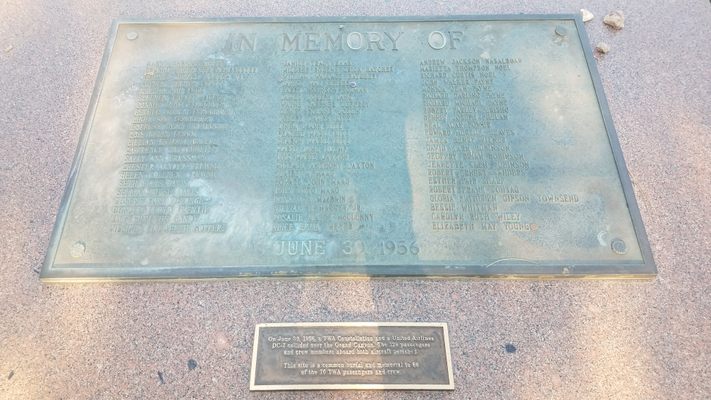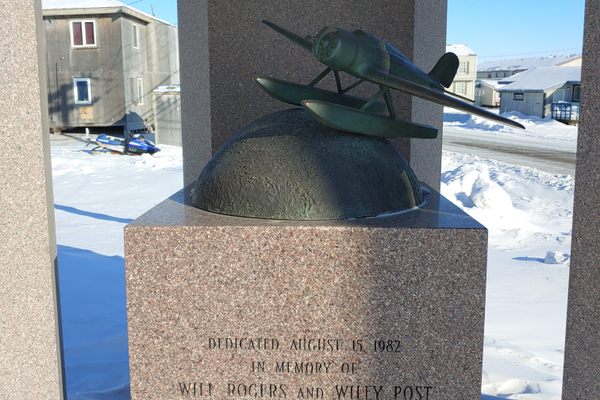About
On June 30, 1956, at 9:01 am, TWA Flight 2 took off from Los Angeles International Airport flying to Kansas City. Three minutes later, United Airlines Flight 718 also took off from Los Angeles headed for Chicago. The two flights would become tragically entwined over the Grand Canyon about an hour and a half later.
Shortly after takeoff, the pilot of the TWA plane requested to change his altitude from 19,000 to 21,000 feet to avoid storm clouds. At the time, commercial flights had no direct contact with air traffic controllers after their takeoff, so messages had to be sent to a TWA dispatcher and relayed to controllers. Air traffic controllers denied this request because the United flight was already flying at that altitude.
The TWA pilot then requested to fly “1,000 on top,” which meant flying 1,000 feet above the clouds they encountered but being responsible for their own separation from other aircraft. This request was approved by air traffic controllers but the pilot was not adequately warned of the United flight in the same area and on approximately the same flight path. TWA Flight 2 climbed up to 21,000 feet as it passed over the Grand Canyon. United Flight 718 and TWA Flight 2 then each flew around opposite sides of a towering storm cloud in the way of their routes, not knowing the other plane was at the same altitude.
At around 10:30 a.m., the two planes clipped each other as they navigated around the cloud, losing control and plummeting into the canyon below. Analysis of the wreckage seems to show that the pilot of the United flight probably saw they were on a collision course with the TWA flight, but only seconds beforehand. While attempting to avoid a crash, the left wing of the United plane struck the tail of the TWA plane. None of the 128 people aboard the two planes survived.
At the time, huge parts of the country had no radar tracking flights, including above the Grand Canyon. Planes were not typically equipped with tracking beacons or flight data recorders, so it was not immediately known that a disaster had unfolded. It wasn't until the planes went for some time without manually reporting their position that it was suspected something might be amiss.
The wreckage was first spotted many hours later by Henry and Palen Hudgin, brothers who flew short taxi flights for Grand Canyon Airlines. They spotted smoke rising from within the canyon but not knowing about the missing planes they dismissed it as a brush fire caused by lightning from the earlier storm. Upon learning of the missing planes, they flew back into the canyon to take a closer look at the smoke and saw the wreckage.
The crash was in a remote and rugged area of the canyon that had unpredictable air currents, making helicopter flights to the area dangerous. Swiss mountain climbers were recruited to assist in accessing the site. The Swiss climbers gathered the human remains, although very few were identifiable.
Of the 70 passengers aboard TWA Flight 2, 66 of the remains were not able to be identified and were buried in a mass grave at Citizens Cemetery in Flagstaff, Arizona. At the time, the crash was the deadliest commercial airline disaster in U.S. history. It became the catalyst for many changes and improvements to air safety, including folding all air traffic control under a single government agency, the Federal Aviation Administration, and requiring that commercial flights were equipped with a “black box” to record cockpit communications and flight data.
In 2014, the site of the wreckage was declared a National Historic Landmark, although the remote area of the Grand Canyon has been off-limits to visitors since the 1950s. A memorial to the crash was placed along the south rim of the canyon at the Desert View overlook. The unidentified remains from TWA Flight 2 still rest in a mass grave at Citizens Cemetery, within a small lawn and marked with a plaque.
Related Tags
Know Before You Go
Citizens Cemetery is located at 1300 S. San Francisco St. near downtown Flagstaff, across the street from the Student Services Center of Northern Arizona University. The grave is located north of Doyle Drive and Clark Ave within the cemetery. Please be respectful when visiting the cemetery.
Community Contributors
Added By
Published
September 4, 2019


































